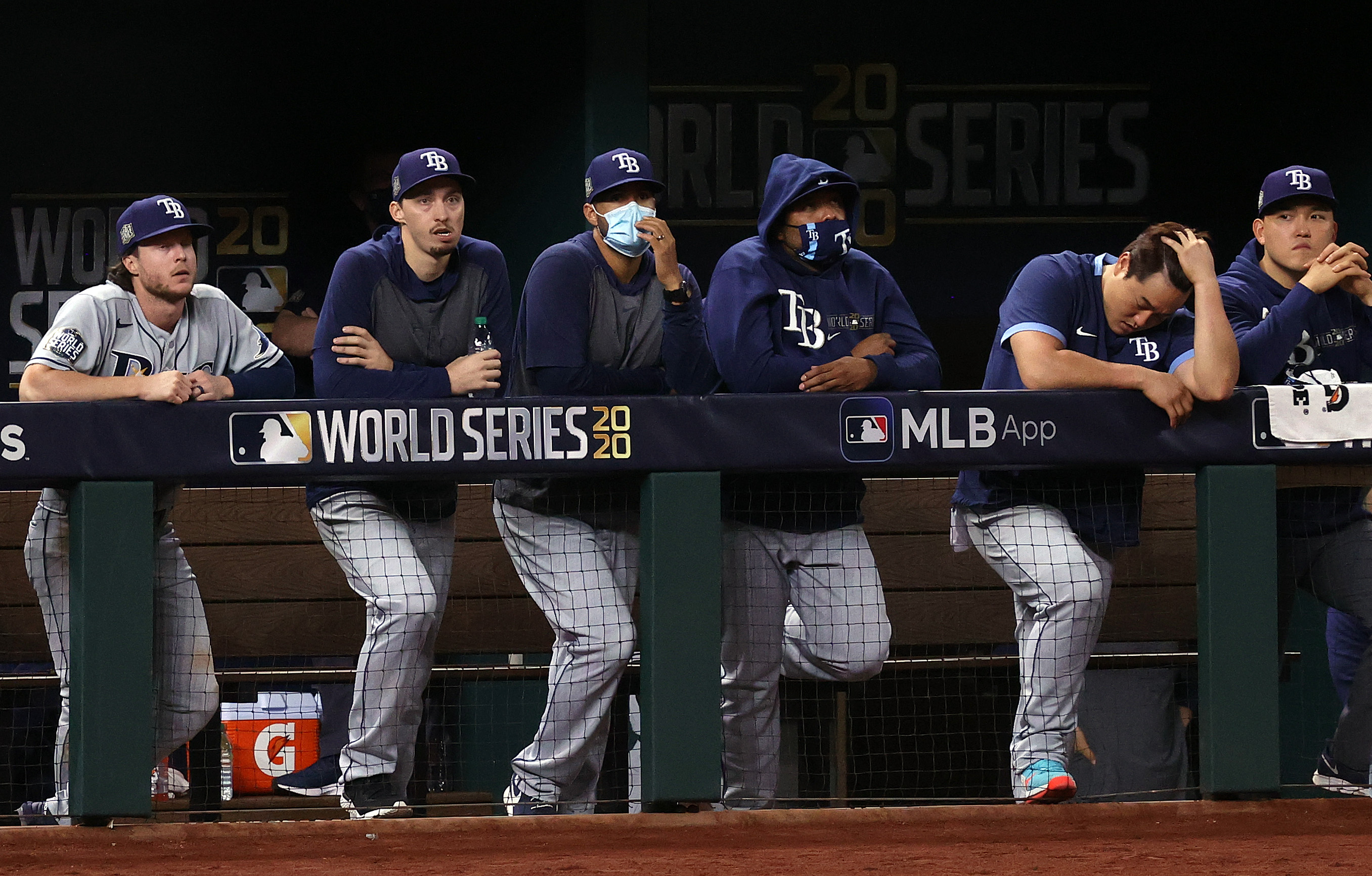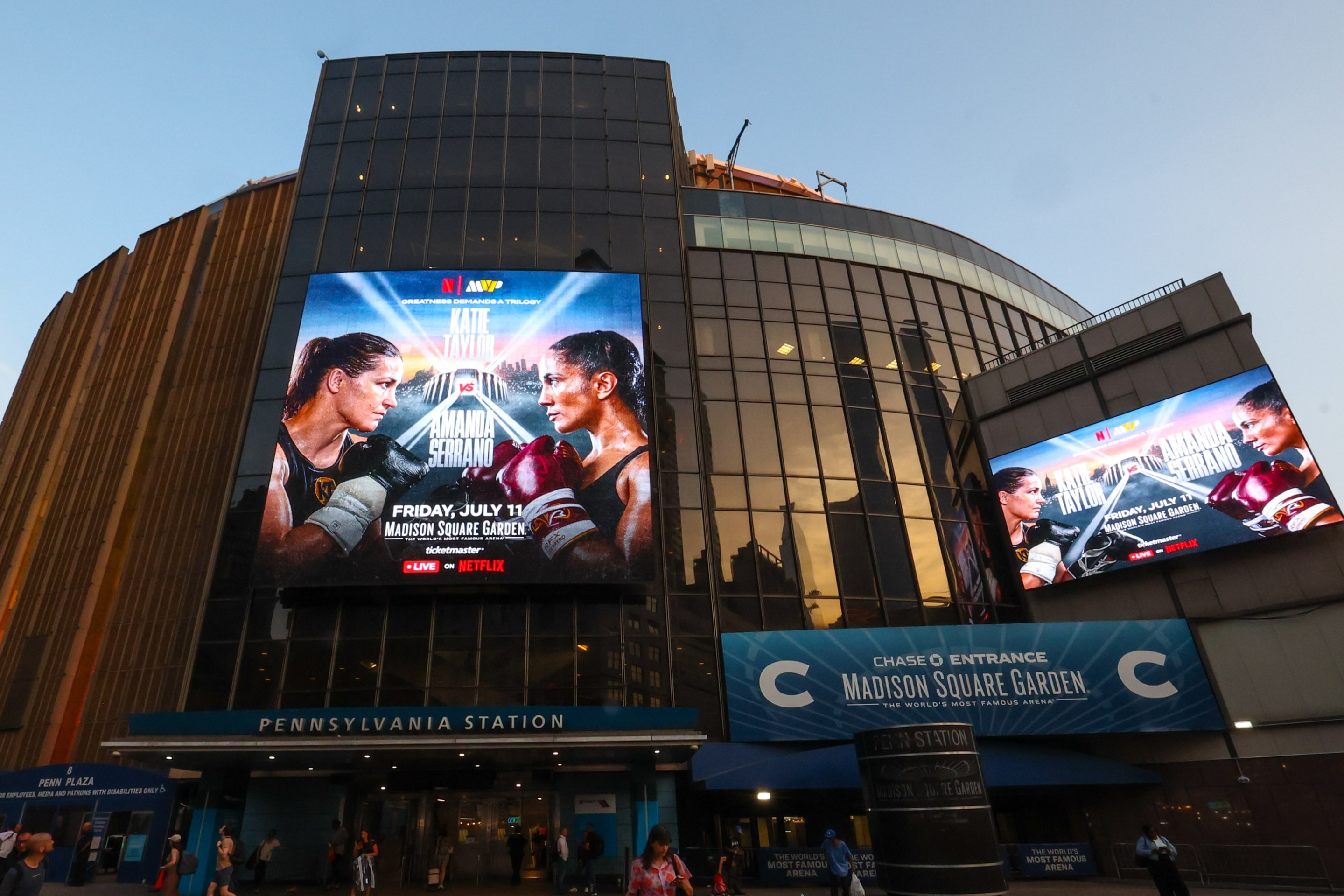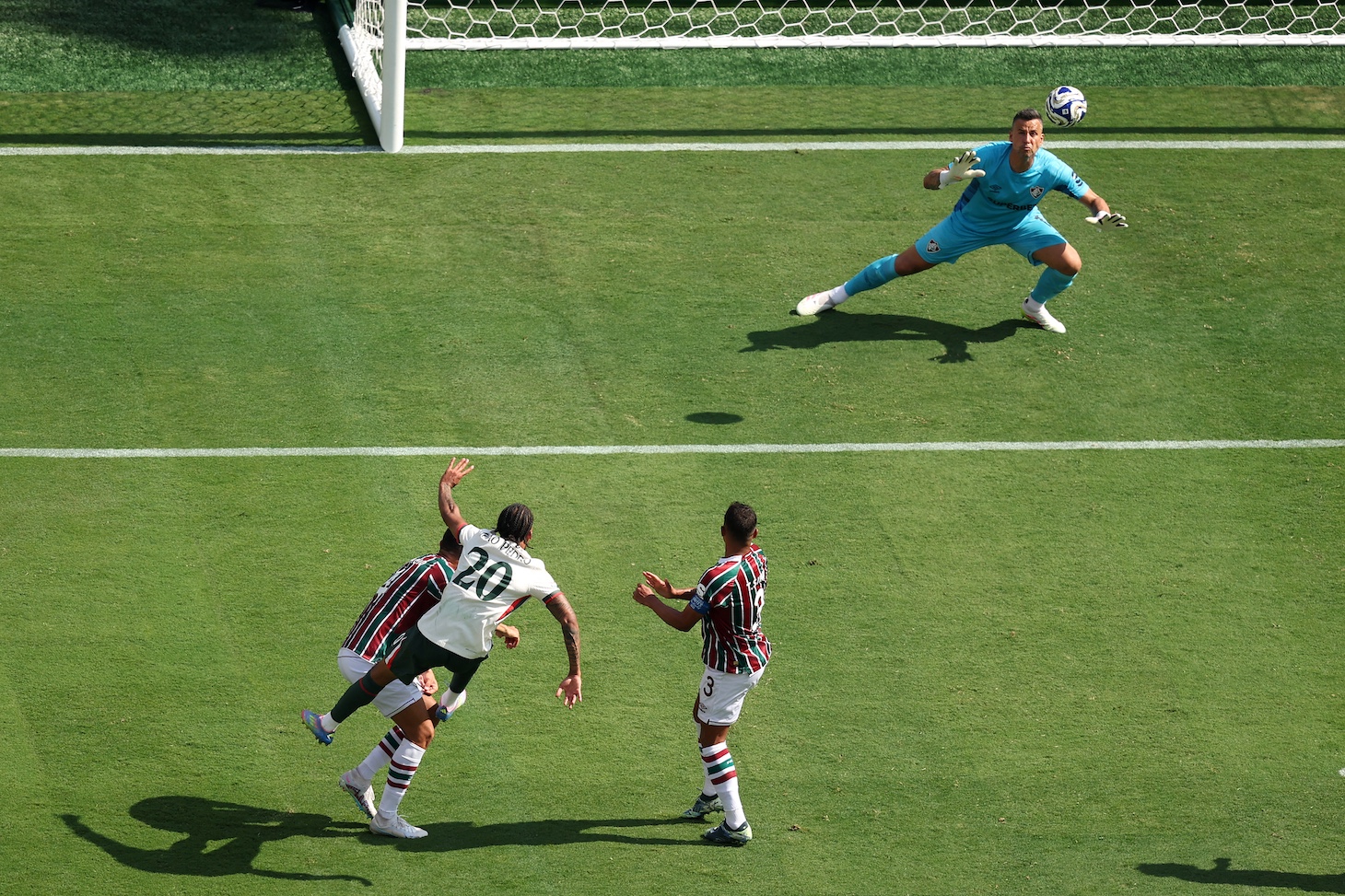Defector has partnered with Baseball Prospectus to bring you a taste of their work. They write good shit that we think you’ll like. If you do like it, we encourage you to check out their site and subscribe.
This story was originally published at Baseball Prospectus on Nov. 12.
One of the codewords, the half-drawn fishes in the sand of baseball fandom, is a hatred of the bunt. Back when people were in the business of advocating for the unemployment of Joe Morgan, the Hall of Famer’s stance on bunting served as a rallying point against the favored and feckless fundamentals of the game. Bunting is bad. It doesn’t help teams win.
And they were right, of course. Bunting is almost always a bad decision. But Morgan was also right, because bunting is almost always good, aesthetically. So much of the tension, the strategy of the conflict between pitcher and batter lives in the palm of the pitcher. He has the plan, and the batter’s job is simply to react. He can guess, and there is strategy in that, but it’s a strategy closed to the viewer; we get no signals from him. Bunting was the batter’s half of mixed strategy, the equivalent of reading the exact moment for the drop shot in tennis.
We lost that layer of complexity to the game once we realized that it was, in fact, bad strategy. But in their rush to optimize, take advantage of the system as it existed, the opponents of bunting chose to battle the bunters. They never considered that we’d be better off if the system had just been fixed, the balance restored rather than exploited. But then, exploiting is what we do.
Baseball is conquered ground, at this point. The pleasure of the action itself remains untouched, and in those brief moments when fans can ignore its context, either because we are too close (in October) or too far away (in March), it maintains its original power. But the game would be better served with the addition of some novelty. The sport itself is fine. The metagame that has built itself up around it, the analysis and the acquisition and the valuing, has become too easy. The sport would be better off if, instead of using the tools of analysis to devalue known assets and search for systems and loopholes to extract monetary advantage, the game were thrust back into the chaos and darkness of the time before Moneyball, to create a new frontier.
The red and blue map of U.S. presidential elections feels almost indelible in 2020. In the past four years we’ve witnessed a string of momentous events: the reshaping of the Supreme Court, an impeachment, a nationwide protest, and a pandemic. And yet for all that turbulence, the newest presidential race came out almost identical to the last one, with only a few states narrowly overturned. In such consistent times, it can be disorienting to glance at another narrow contest. The 1976 election saw Democrat Jimmy Carter claim a 297-240 victory … by uniting the majority of the Eastern Seaboard with the South, against a coalition of the greater Midwest, Great Plains, and West Coast. Half a century ago were some strange times.
It gets more unsettling the farther back you go. In the early-to-mid 19th century, the Democrats and the Republicans were actually the Democratic-Republicans, and their opposition was the now nearly-forgotten Whig Party. The Whigs had some hits—including four presidents, although they kicked one of them out of the club mid-term for vetoing legislation for a National Bank—but their legend faded away because they failed to fit into the grand narrative of history. The Whig party wasn’t bound by the North-South dichotomy, and held no strong ideological stance regarding slavery. But even as that problem of slavery dominated the first century of the nation’s existence, another divide exerted its force on American politics: the Appalachian mountains. The westward expansion of America, and the balance of its political and economic power against that of the original colonies, created a unique situation in world history.
It’s hard to overstate how vital the frontier was to the American experiment of democracy. The western border acted as a release valve for so much of the country’s economic and cultural conflicts, by offering “free” land and a sort of cultural homogeneity brought on by the demands of the pioneer lifestyle. The Whigs represented that second colony, protecting the interests of the farms and mines that supplied raw materials to the bigger cities back East. The Wild West has been mythologized and romanticized, its hardships and freedoms baked into the American ethos. Long after the Whigs themselves disbanded, the Wild West had its own identity, completely separate from the rest of the country. And then, around the turn of the 20th century, the frontier ran out, and the West was tamed.
It’s no coincidence that as the cheap labor and cheap opportunity of the West dried up, the nation immediately swung its gaze outside its borders, and became an imperial power. Manifest destiny, that cultural and economic pressure to push westward, to take, never went away. It kept pushing, kept taking, just in new directions, seeking new opportunities. Generations of schoolchildren were taught that manifest destiny was America’s natural right; in reality, it was just its nature.
Even as the political era of the present remains static, we’re witnessing a seismic shift in Major League Baseball. The era of opportunity cost in baseball, the chapter we’ve lived in for the past quarter-century, is dead. Several years ago I made the case that it was time to stop considering player salaries when conducting transaction analysis, both because of its devaluation of labor and because of the difficulty of understanding what, exactly, the lost opportunity of an albatross contract presents when we lack access to trustworthy financial information. Now, I repeat this request, because the consideration of baseball players as commodities is no longer simply distasteful, it is also meaningless. Teams no longer operate under the constraints we’ve long assumed.
Thirty teams had the opportunity to employ relief pitcher Brad Hand for a single year at a price of $10 million. Thirty teams could pencil in a league-average, in-their-prime second baseman in Kolten Wong for $12.5 million. None did so. The idea of large and small markets, that some teams can afford the best players and others can’t, the philosophy that underpinned the seminal cliche of modern baseball, Moneyball, is now a myth. Your favorite team could improve its chances of winning. It won’t, because it doesn’t believe it’s worth it. Franchises are no longer forced to rely on winning to create profit. The era of baseball as pure competition is over.
The sabermetric movement wasn’t always tied to cost efficiency; in the 1980s, Bill James and his colleagues were far more concerned about the productivity of players, and the allotment of playing time, than the salaries of anyone involved. Ken Phelps deserved a job not because of his pre-arbitration status, but because his on-base and slugging percentages were higher than half the guys in the major leagues. Markets weren’t yet the narrative presence they’d soon become; the Mets succeeded because they drafted Dwight Gooden and Darryl Strawberry, not because they signed Rusty Staub. The Yankees were throwing money at Andy Hawkins and Scott Sanderson.
Money and statistics became intertwined thanks to Moneyball, and the narrative that forged that union has dominated two decades of thought. But it’s hardly alone. The compression of baseball players into numerical value has been going on since Henry Chadwick first arranged numbers into a box score, but the commodification of that labor only increased with the advent of fantasy sports. Fans have long felt dominion over the performance of their favorites, making it clear when they feel that they are owed.
Attacks have been leveled against the minds of the Moneyball era, many of them gracing these venerable pages, that analytics and the anti-player permutations of that research led us to our current fate, the way that Teddy Roosevelt charged the nation up Kettle Hill and led to it occupying Cuba, Haiti, and the Philippines. Certainly analytics have led to the dehumanization of labor, just as we’re seeing everywhere, with Uber handling its non-employees and Target tracking the check times of its cashiers. It’s not entirely clear to me, however, that this path was premeditated. Baseball consumed one frontier, and with all these tools lying around, turned its attention to another one.
The death of the frontier arrived at the hands of two opposite forces. First was the natural consequence of the West’s anti-governmental individualism: Capital concentrated into fewer and fewer hands, who then employed those funds to generate more funds, resulting in the monopolistic economics that marked the era of robber barons and railroad tycoons. There was no opportunity left because everything was owned, and then borrowed, and once the hard times arrived, collected upon. The other element was the government itself, as the rise of the conservation movement and of the value of protecting public resources grew with their rapid diminishment.
As the historian Frederick Jackson Turner writes:
At the same time the masters of industry, who control interests which represent billions of dollars, do not admit that they have broken with pioneer ideals. They regard themselves as pioneers under changed conditions, carrying on the old work of developing the natural resources of the nation, compelled by the constructive fever in their veins, even in ill-health and old age and after the accumulation of wealth beyond their power to enjoy, to seek new avenues of action and of power, to chop new clearings, to find new trails, to expand the horizon of the nation’s activity, and to extend the scope of their dominion.
So too have we seen with baseball, without the conservation movement or the presence of a force for the social good. The natural resource in question is fandom, and the disposable income that signifies it; and as with timber and coal and water, it is assumed they are forever renewable.

I love baseball, so sometimes I wonder why I spend so much time trying to change baseball. Part of this is my political science background: I like looking at systems and figuring out how to fix them, even though no one ever fixes much of anything. But there’s another factor here, and it’s middle age. I watch my children and everything is novel and new. They can rewatch cartoons dozens of times, listen to four-chord pop songs in perpetuity. As I grow older, and I’m supposed to be falling into the clutches of nostalgia, I find myself yearning for novelty.
I understand, and sympathize, with the people who don’t want the game to change. But the game is changing, constantly. Its players and managers learn, and adapt, and evolve. If the structure of the game remains constant, its actors will evolve to take advantage of its strengths and weaknesses. This is true inside the game, and it is also true around it. And once they can no longer improve, at least not visibly, they will turn to cutting costs. The result is something that no longer benefits the greater good.
Unlike the topography of the plains, baseball can easily reshape itself. It can breathe life into itself by changing the rules, distorting and evolving itself, rewarding the minds that can puzzle out the advantages presented by a new environment. The league can randomize the batting order, or the defensive assignments, curbing the widening overspecialization that has cut through the game the way a river cuts through bedrock over millennia. It can restore the fair-foul bunt to boost the value of the nearly extinct slap-hitting speedsters, deaden the ball to scare away the uppercutters. It can do whatever it wants to make the game unpredictable again. We need to give the analysts more to analyze.
Because MLB is no longer baseball, or at least no longer just baseball. It must continually move outwards, explore, paddle new revenue streams. There is little we can do to stop this. But one thing we can do, should do, is refuse to go along. The caretakers of baseball have altered their priorities, but just as people protested the rise of the American Empire, of its occupation of island nations and formation of banana republics, we can reject the priorities of billionaires. We do not have to care whether a player makes five million or ten million dollars just because the owner says (though always, always refuses to prove) they can pay no more. We can consume what we wish, even if it’s just a team that makes its best effort to win.







